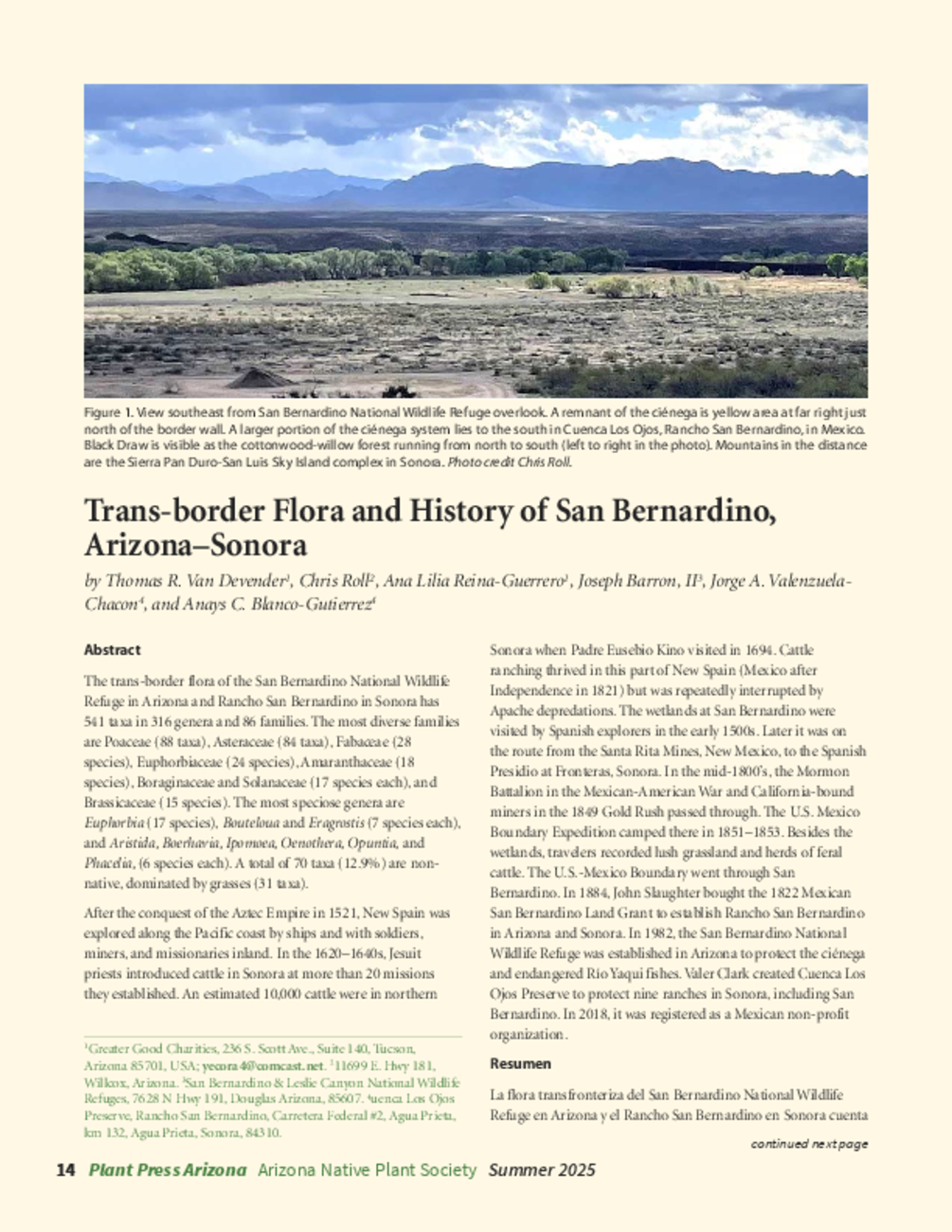Trans-border Flora and History of San Bernardino
The trans-border flora of the San Bernardino National Wildlife Refuge in Arizona and Rancho San Bernardino in Sonora has 541 taxa in 316 genera and 86 families. The most diverse families are Poaceae (88 taxa), Asteraceae (84 taxa), Fabaceae (28 species), Euphorbiaceae (24 species), Amaranthaceae (18 species), Boraginaceae and Solanaceae (17 species each), and Brassicaceae (15 species). The most speciose genera are Euphorbia (17 species), Bouteloua and Eragrostis (7 species each), and Aristida, Boerhavia, Ipomoea, Oenothera, Opuntia, and Phacelia, (6 species each). A total of 70 taxa (12.9%) are non- native, dominated by grasses (31 taxa). After the conquest of the Aztec Empire in 1521, New Spain was explored along the Pacific coast by ships and with soldiers, miners, and missionaries inland. In the 1620–1640s, Jesuit priests introduced cattle in Sonora at more than 20 missions they established. An estimated 10,000 cattle were in northern Sonora when Padre Eusebio Kino visited in 1694. Cattle ranching thrived in this part of New Spain (Mexico after Independence in 1821) but was repeatedly interrupted by Apache depredations. The wetlands at San Bernardino were visited by Spanish explorers in the early 1500s. Later it was on the route from the Santa Rita Mines, New Mexico, to the Spanish Presidio at Fronteras, Sonora. In the mid-1800’s, the Mormon Battalion in the Mexican-American War and California-bound miners in the 1849 Gold Rush passed through. The U.S. Mexico Boundary Expedition camped there in 1851–1853. Besides the wetlands, travelers recorded lush grassland and herds of feral cattle. The U.S.-Mexico Boundary went through San Bernardino. In 1884, John Slaughter bought the 1822 Mexican San Bernardino Land Grant to establish Rancho San Bernardino in Arizona and Sonora. In 1982, the San Bernardino National Wildlife Refuge was established in Arizona to protect the ciénega and endangered Río Yaqui fishes. Valer Clark created Cuenca Los Ojos Preserve to protect nine ranches in Sonora, including San Bernardino. In 2018, it was registered as a Mexican non-profit organization.

